Emerging Characteristics and Properties of Moiré Materials
Abstract
:1. Introduction
2. Properties
2.1. Superconductivity of Moiré Superlattice
2.2. Fractional Quantum Hall Effect of Moiré Superlattice
2.3. Ferromagnetic of Moiré Superlattice
2.4. Antiferromagnetic of Twisted Bilayer CrI3
2.5. Topological of Twisted Monolayer-Bilayer Graphene
3. Applications of Moiré Superlattices
3.1. Photocurrent of TBG Device
3.2. Superconducting Quantum Interference Device (SQUID)
3.3. Moiré Superlattices Derived from Mechanical Flexibility
3.4. Thermoelectric of Twist Bilayer Borophene
4. Conclusions
Author Contributions
Funding
Conflicts of Interest
References
- Novoselov, K.S.; Geim, A.K.; Morozov, S.V.; Jiang, D.; Zhang, Y.; Dubonos, S.V.; Grigorieva, I.V.; Firsov, A.A. Electric field effect in atomically thin carbon films. Science 2004, 306, 666–669. [Google Scholar] [CrossRef] [PubMed]
- Lemme, M.C.; Akinwande, D.; Huyghebaert, C.; Stampfer, C. 2D materials for future heterogeneous electronics. Nat. Commun. 2022, 13, 1392. [Google Scholar] [CrossRef]
- Choi, S.H.; Yun, S.J.; Won, Y.S.; Oh, C.S.; Kim, S.M.; Kim, K.K.; Lee, Y.H. Large-scale synthesis of graphene and other 2D materials towards industrialization. Nat. Commun. 2022, 13, 1484. [Google Scholar] [CrossRef] [PubMed]
- Bao, C.; Tang, P.; Sun, D.; Zhou, S. Light-induced emergent phenomena in 2D materials and topological materials. Nat. Rev. Phys. 2022, 4, 33–48. [Google Scholar] [CrossRef]
- Geim, A.K.; Grigorieva, I.V. Van der Waals heterostructures. Nature 2013, 499, 419–425. [Google Scholar] [CrossRef]
- Novoselov, K.S.; Mishchenko, A.; Carvalho, A.; Neto, A.H.C. 2D materials and van der Waals heterostructures. Science 2016, 353, aac9439. [Google Scholar] [CrossRef] [PubMed]
- Liu, Y.; Weiss, N.O.; Duan, X.; Cheng, H.-C.; Huang, Y.; Duan, X. Van der Waals heterostructures and devices. Nat. Rev. Mater. 2016, 1, 16042. [Google Scholar] [CrossRef]
- Li, W.; Yang, Z.; Sun, M.; Dong, J. Interlayer interactions in transition metal dichalcogenides heterostructures. Rev. Phys. 2022, 9, 100077. [Google Scholar] [CrossRef]
- Wang, Q.H.; Bedoya-Pinto, A.; Blei, M.; Dismukes, A.H.; Hamo, A.; Jenkins, S.; Koperski, M.; Liu, Y.; Sun, Q.-C.; Telford, E.J. The magnetic genome of two-dimensional van der Waals materials. ACS Nano 2022, 16, 6960. [Google Scholar] [CrossRef]
- Wu, Y.; Duan, J.; Ma, W.; Ou, Q.; Li, P.; Alonso-González, P.; Caldwell, J.D.; Bao, Q. Manipulating polaritons at the extreme scale in van der Waals materials. Nat. Rev. Phys. 2022, 4, 578–594. [Google Scholar] [CrossRef]
- Healey, A.; Scholten, S.; Yang, T.; Scott, J.; Abrahams, G.; Robertson, I.; Hou, X.; Guo, Y.; Rahman, S.; Lu, Y. Quantum microscopy with van der Waals heterostructures. Nat. Phys. 2023, 19, 87–91. [Google Scholar] [CrossRef]
- Castellanos-Gomez, A.; Duan, X.; Fei, Z.; Gutierrez, H.R.; Huang, Y.; Huang, X.; Quereda, J.; Qian, Q.; Sutter, E.; Sutter, P. Van der Waals heterostructures. Nat. Rev. Methods Primers 2022, 2, 58. [Google Scholar] [CrossRef]
- Wang, Q.H.; Kalantar-Zadeh, K.; Kis, A.; Coleman, J.N.; Strano, M.S. Electronics and optoelectronics of two-dimensional transition metal dichalcogenides. Nat. Nanotechnol. 2012, 7, 699–712. [Google Scholar] [CrossRef] [PubMed]
- Low, J.; Yu, J.; Jaroniec, M.; Wageh, S.; Al-Ghamdi, A.A. Heterojunction photocatalysts. Adv. Mater. 2017, 29, 1601694. [Google Scholar] [CrossRef]
- Li, X.; Shen, R.; Ma, S.; Chen, X.; Xie, J. Graphene-based heterojunction photocatalysts. Appl. Surf. Sci. 2018, 430, 53–107. [Google Scholar] [CrossRef]
- Dean, C.R.; Wang, L.; Maher, P.; Forsythe, C.; Ghahari, F.; Gao, Y.; Katoch, J.; Ishigami, M.; Moon, P.; Koshino, M.; et al. Hofstadter’s butterfly and the fractal quantum Hall effect in moiré superlattices. Nature 2013, 497, 598–602. [Google Scholar] [CrossRef]
- Zhang, Z.; Chen, P.; Duan, X.; Zang, K.; Luo, J.; Duan, X. Robust epitaxial growth of two-dimensional heterostructures, multiheterostructures, and superlattices. Science 2017, 357, 788–792. [Google Scholar] [CrossRef]
- Nam, N.N.T.; Koshino, M. Lattice relaxation and energy band modulation in twisted bilayer graphene. Phys. Rev. B 2017, 96, 075311. [Google Scholar] [CrossRef]
- Dai, Z.; Hu, G.; Si, G.; Ou, Q.; Zhang, Q.; Balendhran, S.; Rahman, F.; Zhang, B.Y.; Ou, J.Z.; Li, G.; et al. Edge-oriented and steerable hyperbolic polaritons in anisotropic van der Waals nanocavities. Nat. Commun. 2020, 11, 6086. [Google Scholar] [CrossRef]
- Du, L.; Molas, M.R.; Huang, Z.; Zhang, G.; Wang, F.; Sun, Z. Moiré photonics and optoelectronics. Science 2023, 379, eadg0014. [Google Scholar] [CrossRef]
- Schmidt, H.; Rode, J.C.; Smirnov, D.; Haug, R.J. Superlattice structures in twisted bilayers of folded graphene. Nat. Commun. 2014, 5, 5742. [Google Scholar] [CrossRef]
- Wang, J.; Mu, X.; Wang, L.; Sun, M. Properties and applications of new superlattice: Twisted bilayer graphene. Mater. Today Phys. 2019, 9, 100099. [Google Scholar] [CrossRef]
- Wang, D.; Chen, G.; Li, C.; Cheng, M.; Yang, W.; Wu, S.; Xie, G.; Zhang, J.; Zhao, J.; Lu, X.; et al. Thermally induced graphene rotation on hexagonal boron nitride. Phys. Rev. Lett. 2016, 116, 126101. [Google Scholar] [CrossRef] [PubMed]
- Yang, X.; Zhang, B. Heterostrain and temperature-tuned twist between graphene/h-BN bilayers. Sci. Rep. 2023, 13, 4364. [Google Scholar] [CrossRef] [PubMed]
- Li, G.; Luican, A.; Santos, J.M.B.L.D.; Neto, A.H.C.; Reina, A.; Kong, J.; Andrei, E.Y. Observation of Van Hove singularities in twisted graphene layers. Nat. Phys. 2010, 6, 109–113. [Google Scholar] [CrossRef]
- Ciepielewski, A.S.; Tworzydło, J.; Hyart, T.; Lau, A. Transport signatures of Van Hove singularities in mesoscopic twisted bilayer graphene. Phys. Rev. Res. 2022, 4, 043145. [Google Scholar] [CrossRef]
- Sanchez, D.S.; Cochran, T.A.; Belopolski, I.; Cheng, Z.-J.; Yang, X.P.; Liu, Y.; Hou, T.; Xu, X.; Manna, K.; Shekhar, C. Tunable topologically driven Fermi arc van Hove singularities. Nat. Phys. 2023, 19, 682–688. [Google Scholar] [CrossRef]
- Dean, C.R.; Young, A.F.; Meric, I.; Lee, C.; Wang, L.; Sorgenfrei, S.; Watanabe, K.; Taniguchi, T.; Kim, P.; Shepard, K.L.; et al. Boron nitride substrates for high-quality graphene electronics. Nat. Nanotechnol. 2010, 5, 722–726. [Google Scholar] [CrossRef]
- Xue, J.; Sanchez-Yamagishi, J.; Bulmash, D.; Jacquod, P.; Deshpande, A.; Watanabe, K.; Taniguchi, T.; Jarillo-Herrero, P.; LeRoy, B.J. Scanning tunnelling microscopy and spectroscopy of ultra-flat graphene on hexagonal boron nitride. Nat. Mater. 2011, 10, 282–285. [Google Scholar] [CrossRef]
- Giovannetti, G.; Khomyakov, P.A.; Brocks, G.; Kelly, P.J.; van den Brink, J. Substrate-induced band gap in graphene on hexagonal boron nitride: Ab initio density functional calculations. Phys. Rev. B 2007, 76, 073103. [Google Scholar] [CrossRef]
- Amet, F.; Williams, J.R.; Watanabe, K.; Taniguchi, T.; Goldhaber-Gordon, D. Insulating behavior at the neutrality point in single-layer graphene. Phys. Rev. Lett. 2013, 110, 216601. [Google Scholar] [CrossRef] [PubMed]
- Gorbachev, R.V.; Song, J.C.W.; Yu, G.L.; Kretinin, A.V.; Withers, F.; Cao, Y.; Mishchenko, A.; Grigorieva, I.V.; Novoselov, K.S.; Levitov, L.S.; et al. Detecting topological currents in graphene superlattices. Science 2014, 346, 448–451. [Google Scholar] [CrossRef] [PubMed]
- Hunt, B.; Sanchez-Yamagishi, J.D.; Young, A.F.; Yankowitz, M.; LeRoy, B.J.; Watanabe, K.; Taniguchi, T.; Moon, P.; Koshino, M.; Jarillo-Herrero, P.; et al. Massive Dirac fermions and Hofstadter butterfly in a van der Waals heterostructure. Science 2013, 340, 1427–1430. [Google Scholar] [CrossRef] [PubMed]
- Ponomarenko, L.A.; Gorbachev, R.V.; Yu, G.L.; Elias, D.C.; Jalil, R.; Patel, A.A.; Mishchenko, A.; Mayorov, A.S.; Woods, C.R.; Wallbank, J.R.; et al. Cloning of Dirac fermions in graphene superlattices. Nature 2013, 497, 594–597. [Google Scholar] [CrossRef] [PubMed]
- Alden, J.S.; Tsen, A.W.; Huang, P.Y.; Hovden, R.; Brown, L.; Park, J.; Muller, D.A.; McEuen, P.L. Strain solitons and topological defects in bilayer graphene. Proc. Natl. Acad. Sci. USA 2013, 110, 11256–11260. [Google Scholar] [CrossRef]
- San-Jose, P.; Gorbachev, R.V.; Geim, A.K.; Novoselov, K.S.; Guinea, F. Stacking boundaries and transport in bilayer graphene. Nano Lett. 2014, 14, 2052–2057. [Google Scholar] [CrossRef]
- Gargiulo, F.; Yazyev, O.V. Structural and electronic transformation in low-angle twisted bilayer graphene. 2D Mater. 2018, 5, 015019. [Google Scholar] [CrossRef]
- Wijk, M.M.V.; Schuring, A.; Katsnelson, M.I.; Fasolino, A. Relaxation of moiré patterns for slightly misaligned identical lattices: Graphene on graphite. 2D Mater. 2015, 2, 034010. [Google Scholar] [CrossRef]
- Wang, E.; Lu, X.; Ding, S.; Yao, W.; Yan, M.; Wan, G.; Deng, K.; Wang, S.; Chen, G.; Ma, L.; et al. Gaps induced by inversion symmetry breaking and second-generation Dirac cones in graphene/hexagonal boron nitride. Nat. Phys. 2016, 12, 1111–1115. [Google Scholar] [CrossRef]
- Smeyers, R.; Milošević, M.V.; Covaci, L. Strong gate-tunability of flat bands in bilayer graphene due to moiré encapsulation between hBN monolayers. Nanoscale 2023, 15, 4561–4569. [Google Scholar] [CrossRef]
- Lin, X.; Zhu, H.; Ni, J. High pressure induced secondary and tertiary gaps in relaxed graphene on hexagonal boron nitride. Phys. Rev. B 2022, 105, 075424. [Google Scholar] [CrossRef]
- Vu, N.H.; Le, H.V.; Phan, T.B.; Thoai, N.; Nguyen, T.T.; Le, H.M.; Kawazoe, Y.; Cao, T.M. Emergence of different replica Dirac cones and intra-and intervalley scatterings in short-wavelength graphene superlattices modulated by an atomic-scale sharp potential. J. Phys. Chem. C 2022, 126, 15415–15423. [Google Scholar] [CrossRef]
- Shaffer, D.; Wang, J.; Santos, L.H. Unconventional self-similar Hofstadter superconductivity from repulsive interactions. Nat. Commun. 2022, 13, 7785. [Google Scholar] [CrossRef] [PubMed]
- Adak, P.C.; Sinha, S.; Giri, D.; Mukherjee, D.K.; Chandan; Sangani, L.D.V.; Layek, S.; Mukherjee, A.; Watanabe, K.; Taniguchi, T.; et al. Perpendicular electric field drives Chern transitions and layer polarization changes in Hofstadter bands. Nat. Commun. 2022, 13, 7781. [Google Scholar] [CrossRef] [PubMed]
- Bistritzer, R.; MacDonald, A.H. Moiré bands in twisted double-layer graphene. Proc. Natl. Acad. Sci. USA 2011, 108, 12233–12237. [Google Scholar] [CrossRef]
- Cao, Y.; Fatemi, V.; Fang, S.; Watanabe, K.; Taniguchi, T.; Kaxiras, E.; Jarillo-Herrero, P. Unconventional superconductivity in magic-angle graphene superlattices. Nature 2018, 556, 43–50. [Google Scholar] [CrossRef]
- Cao, Y.; Fatemi, V.; Demir, A.; Fang, S.; Tomarken, S.L.; Luo, J.Y.; Sanchez-Yamagishi, J.D.; Watanabe, K.; Taniguchi, T.; Kaxiras, E.; et al. Correlated insulator behaviour at half-filling in magic-angle graphene superlattices. Nature 2018, 556, 80–84. [Google Scholar] [CrossRef]
- Utama, M.I.B.; Koch, R.J.; Lee, K.; Leconte, N.; Li, H.; Zhao, S.; Jiang, L.; Zhu, J.; Watanabe, K.; Taniguchi, T.; et al. Visualization of the flat electronic band in twisted bilayer graphene near the magic angle twist. Nat. Phys. 2021, 17, 184–188. [Google Scholar] [CrossRef]
- Lisi, S.; Lu, X.; Benschop, T.; de Jong, T.A.; Stepanov, P.; Duran, J.R.; Margot, F.; Cucchi, I.; Cappelli, E.; Hunter, A.; et al. Observation of flat bands in twisted bilayer graphene. Nat. Phys. 2021, 17, 189–193. [Google Scholar] [CrossRef]
- Hyart, T.; Ojajärvi, R.; Heikkilä, T. Two topologically distinct Dirac-line semimetal phases and topological phase transitions in rhombohedrally stacked honeycomb lattices. J. Low Temp. Phys. 2018, 191, 35–48. [Google Scholar] [CrossRef]
- Shashkin, A.; Dolgopolov, V.; Clark, J.; Shaginyan, V.; Zverev, M.; Khodel, V. Merging of Landau Levels in a Strongly Interacting Two-Dimensional Electron System in Silicon. Phys. Rev. Lett. 2014, 112, 186402. [Google Scholar] [CrossRef] [PubMed]
- Kauppila, V.; Aikebaier, F.; Heikkilä, T. Flat-band superconductivity in strained Dirac materials. Phys. Rev. B 2016, 93, 214505. [Google Scholar] [CrossRef]
- Mikitik, G.; Sharlai, Y.V. Dirac points of electron energy spectrum, band-contact lines, and electron topological transitions of 3 ½ kind in three-dimensional metals. Phys. Rev. B 2014, 90, 155122. [Google Scholar] [CrossRef]
- Bednorz, J.G.; Müller, K.A. Possible highTc superconductivity in the Ba−La−Cu−O system. Z. Phys. B 1986, 64, 189–193. [Google Scholar] [CrossRef]
- Yankowitz, M.; Chen, S.; Polshyn, H.; Zhang, Y.; Watanabe, K.; Taniguchi, T.; Graf, D.; Young, A.F.; Dean, C.R. Tuning superconductivity in twisted bilayer graphene. Science 2019, 363, 1059–1064. [Google Scholar] [CrossRef] [PubMed]
- Cao, Y.; Park, J.M.; Watanabe, K.; Taniguchi, T.; Jarillo-Herrero, P. Pauli-limit violation and re-entrant superconductivity in moiré graphene. Nature 2021, 595, 526–531. [Google Scholar] [CrossRef]
- Park, J.M.; Cao, Y.; Xia, L.-Q.; Sun, S.; Watanabe, K.; Taniguchi, T.; Jarillo-Herrero, P. Robust superconductivity in magic-angle multilayer graphene family. Nat. Mater. 2022, 21, 877–883. [Google Scholar] [CrossRef]
- Arora, H.S.; Polski, R.; Zhang, Y.; Thomson, A.; Choi, Y.; Kim, H.; Lin, Z.; Wilson, I.Z.; Xu, X.; Chu, J.-H.; et al. Superconductivity in metallic twisted bilayer graphene stabilized by WSe2. Nature 2020, 583, 379–384. [Google Scholar] [CrossRef]
- Chen, G.; Sharpe, A.L.; Gallagher, P.; Rosen, I.T.; Fox, E.J.; Jiang, L.; Lyu, B.; Li, H.; Watanabe, K.; Taniguchi, T.; et al. Signatures of tunable superconductivity in a trilayer graphene moiré superlattice. Nature 2019, 572, 215–219. [Google Scholar] [CrossRef]
- Tsui, D.C.; Stormer, H.L.; Gossard, A.C. Two-dimensional magnetotransport in the extreme quantum limit. Phys. Rev. Lett. 1982, 48, 1559. [Google Scholar] [CrossRef]
- Sanchez-Yamagishi, J.D.; Luo, J.Y.; Young, A.F.; Hunt, B.M.; Watanabe, K.; Taniguchi, T.; Ashoori, R.C.; Jarillo-Herrero, P. Helical edge states and fractional quantum Hall effect in a graphene electron–hole bilayer. Nature nanotechnology. Nat. Nanotechnol. 2017, 12, 118–122. [Google Scholar] [CrossRef] [PubMed]
- Lindner, N.H.; Berg, E.; Refael, G.; Stern, A. Fractionalizing majorana fermions: Non-abelian statistics on the edges of abelian quantum hall states. Phys. Rev. X 2012, 2, 041002. [Google Scholar] [CrossRef]
- Clarke, D.J.; Alicea, J.; Shtengel, K. Exotic non-Abelian anyons from conventional fractional quantum Hall states. Nat. Commun. 2013, 4, 1348. [Google Scholar] [CrossRef] [PubMed]
- Cheng, M. Superconducting proximity effect on the edge of fractional topological insulators. Phys. Rev. B 2012, 86, 195126. [Google Scholar] [CrossRef]
- Claassen, M.; Xian, L.; Kennes, D.M.; Rubio, A. Ultra-strong spin–orbit coupling and topological moiré engineering in twisted ZrS2 bilayers. Nat. Commun. 2022, 13, 4915. [Google Scholar] [CrossRef]
- Kang, J.; Vafek, O. Strong coupling phases of partially filled twisted bilayer graphene narrow bands. Phys. Rev. Lett. 2019, 122, 246401. [Google Scholar] [CrossRef] [PubMed]
- Xie, M.; MacDonald, A.H. Nature of the correlated insulator states in twisted bilayer graphene. Phys. Rev. Lett. 2020, 124, 097601. [Google Scholar] [CrossRef] [PubMed]
- Ochi, M.; Koshino, M.; Kuroki, K. Possible correlated insulating states in magic-angle twisted bilayer graphene under strongly competing interactions. Phys. Rev. B 2018, 98, 081102. [Google Scholar] [CrossRef]
- Thomson, A.; Chatterjee, S.; Sachdev, S.; Scheurer, M.S. Triangular antiferromagnetism on the honeycomb lattice of twisted bilayer graphene. Phys. Rev. B 2018, 98, 075109. [Google Scholar] [CrossRef]
- Venderbos, J.W.F.; Fernandes, R.M. Correlations and electronic order in a two-orbital honeycomb lattice model for twisted bilayer graphene. Phys. Rev. B 2018, 98, 245103. [Google Scholar] [CrossRef]
- Seo, K.; Kotov, V.N.; Uchoa, B. Ferromagnetic mott state in twisted graphene bilayers at the magic angle. Phys. Rev. Lett. 2019, 122, 246402. [Google Scholar] [CrossRef]
- Padhi, B.; Phillips, P.W. Pressure-induced metal-insulator transition in twisted bilayer graphene. Phys. Rev. B 2019, 99, 205141. [Google Scholar] [CrossRef]
- Sharpe, A.L.; Fox, E.J.; Barnard, A.W.; Finney, J.; Watanabe, K.; Taniguchi, T.; Kastner, M.A.; Goldhaber-Gordon, D. Emergent ferromagnetism near three-quarters filling in twisted bilayer graphene. Science 2019, 365, 605–608. [Google Scholar] [CrossRef] [PubMed]
- Chittari, B.L.; Chen, G.; Zhang, Y.; Wang, F.; Jung, J. Gate-tunable topological flat bands in trilayer graphene boron-nitride moiré superlattices. Phys. Rev. Lett. 2019, 122, 016401. [Google Scholar] [CrossRef]
- Zhang, Y.-H.; Mao, D.; Cao, Y.; Jarillo-Herrero, P.; Senthil, T. Nearly flat Chern bands in moiré superlattices. Phys. Rev. B 2019, 99, 075127. [Google Scholar] [CrossRef]
- Chen, G.; Jiang, L.; Wu, S.; Lyu, B.; Li, H.; Chittari, B.L.; Watanabe, K.; Taniguchi, T.; Shi, Z.; Jung, J. Evidence of a gate-tunable Mott insulator in a trilayer graphene moiré superlattice. Nat. Phys. 2019, 15, 237–241. [Google Scholar] [CrossRef]
- Hejazi, K.; Luo, Z.-X.; Balents, L. Noncollinear phases in moiré magnets. Proc. Natl. Acad. Sci. USA 2020, 117, 10721–10726. [Google Scholar] [CrossRef]
- Tong, Q.; Liu, F.; Xiao, J.; Yao, W. Skyrmions in the Moiré of van der Waals 2D Magnets. Nano Lett. 2018, 18, 7194–7199. [Google Scholar] [CrossRef] [PubMed]
- Chen, G.; Sharpe, A.L.; Fox, E.J.; Zhang, Y.-H.; Wang, S.; Jiang, L.; Lyu, B.; Li, H.; Watanabe, K.; Taniguchi, T.; et al. Tunable correlated Chern insulator and ferromagnetism in a moiré superlattice. Nature 2020, 579, 56–61. [Google Scholar] [CrossRef]
- Akram, M.; Erten, O. Skyrmions in twisted van der Waals magnets. Phys. Rev. B 2021, 103, L140406. [Google Scholar] [CrossRef]
- Xiao, F.; Chen, K.; Tong, Q. Magnetization textures in twisted bilayer Cr X3 (X = Br, I). Phys. Rev. Res. 2021, 3, 013027. [Google Scholar] [CrossRef]
- Xu, Y.; Ray, A.; Shao, Y.-T.; Jiang, S.; Lee, K.; Weber, D.; Goldberger, J.E.; Watanabe, K.; Taniguchi, T.; Muller, D.A.; et al. Coexisting ferromagnetic–antiferromagnetic state in twisted bilayer CrI3. Nat. Nanotechnol. 2022, 17, 143–147. [Google Scholar] [CrossRef] [PubMed]
- Wang, C.; Gao, Y.; Lv, H.; Xu, X.; Xiao, D. Stacking domain wall magnons in twisted van der Waals magnets. Phys. Rev. Lett. 2020, 125, 247201. [Google Scholar] [CrossRef]
- Koshino, M.; Oka, H. Topological invariants in two-dimensional quasicrystals. Phys. Rev. Res. 2022, 4, 013028. [Google Scholar] [CrossRef]
- Yerin, Y.; Varlamov, A.; Petrillo, C. Topological nature of the transition between the gap and the gapless superconducting states. Europhys. Lett. 2022, 138, 16005. [Google Scholar] [CrossRef]
- Tateishi, I.; Hirayama, M. Topological invariant and domain connectivity in moiré materials. Phys. Rev. B 2023, 107, 125308. [Google Scholar] [CrossRef]
- Mora, C.; Regnault, N.; Bernevig, B.A. Flatbands and perfect metal in trilayer moiré graphene. Phys. Rev. Lett. 2019, 123, 026402. [Google Scholar] [CrossRef] [PubMed]
- Ma, C.; Wang, Q.; Mills, S.; Chen, X.; Deng, B.; Yuan, S.; Li, C.; Watanabe, K.; Taniguchi, T.; Du, X. Moiré band topology in twisted bilayer graphene. Nano Lett. 2020, 20, 6076–6083. [Google Scholar] [CrossRef] [PubMed]
- Chen, S.; He, M.; Zhang, Y.-H.; Hsieh, V.; Fei, Z.; Watanabe, K.; Taniguchi, T.; Cobden, D.H.; Xu, X.; Dean, C.R.; et al. Electrically tunable correlated and topological states in twisted monolayer–bilayer graphene. Nat. Phys. 2021, 17, 374–380. [Google Scholar] [CrossRef]
- Xu, S.; Al Ezzi, M.M.; Balakrishnan, N.; Garcia-Ruiz, A.; Tsim, B.; Mullan, C.; Barrier, J.; Xin, N.; Piot, B.A.; Taniguchi, T.; et al. Tunable van Hove singularities and correlated states in twisted monolayer–bilayer graphene. Nat. Phys. 2021, 17, 619–626. [Google Scholar] [CrossRef]
- Polshyn, H.; Zhu, J.; Kumar, M.A.; Zhang, Y.; Yang, F.; Tschirhart, C.L.; Serlin, M.; Watanabe, K.; Taniguchi, T.; MacDonald, A.H.; et al. Electrical switching of magnetic order in an orbital Chern insulator. Nature 2020, 588, 66–70. [Google Scholar] [CrossRef] [PubMed]
- Choi, Y.; Kim, H.; Peng, Y.; Thomson, A.; Lewandowski, C.; Polski, R.; Zhang, Y.; Arora, H.S.; Watanabe, K.; Taniguchi, T.; et al. Correlation-driven topological phases in magic-angle twisted bilayer graphene. Nature 2021, 589, 536–541. [Google Scholar] [CrossRef] [PubMed]
- Nuckolls, K.P.; Oh, M.; Wong, D.; Lian, B.; Watanabe, K.; Taniguchi, T.; Bernevig, B.A.; Yazdani, A. Strongly correlated Chern insulators in magic-angle twisted bilayer graphene. Nature 2020, 588, 610–615. [Google Scholar] [CrossRef]
- Li, S.-Y.; Wang, Z.; Xue, Y.; Wang, Y.; Zhang, S.; Liu, J.; Zhu, Z.; Watanabe, K.; Taniguchi, T.; Gao, H.-J.; et al. Imaging topological and correlated insulating states in twisted monolayer-bilayer graphene. Nat. Commun. 2022, 13, 4225. [Google Scholar] [CrossRef]
- Tong, Q.; Yu, H.; Zhu, Q.; Wang, Y.; Xu, X.; Yao, W. Topological mosaics in moiré superlattices of van der Waals heterobilayers. Nat. Phys. 2017, 13, 356–362. [Google Scholar] [CrossRef]
- Huang, S.; Kim, K.; Efimkin, D.K.; Lovorn, T.; Taniguchi, T.; Watanabe, K.; MacDonald, A.H.; Tutuc, E.; LeRoy, B.J. Topologically protected helical states in minimally twisted bilayer graphene. Phys. Rev. Lett. 2018, 121, 037702. [Google Scholar] [CrossRef] [PubMed]
- Sunku, S.S.; Halbertal, D.; Stauber, T.; Chen, S.; McLeod, A.S.; Rikhter, A.; Berkowitz, M.E.; Lo, C.F.B.; Gonzalez-Acevedo, D.E.; Hone, J.C.; et al. Hyperbolic enhancement of photocurrent patterns in minimally twisted bilayer graphene. Nat. Commun. 2021, 12, 1641. [Google Scholar] [CrossRef]
- Kerelsky, A.; McGilly, L.J.; Kennes, D.M.; Xian, L.; Yankowitz, M.; Chen, S.; Watanabe, K.; Taniguchi, T.; Hone, J.; Dean, C.; et al. Maximized electron interactions at the magic angle in twisted bilayer graphene. Nature 2019, 572, 95–100. [Google Scholar] [CrossRef]
- Xie, Y.; Lian, B.; Jäck, B.; Liu, X.; Chiu, C.-L.; Watanabe, K.; Taniguchi, T.; Bernevig, B.A.; Yazdani, A. Spectroscopic signatures of many-body correlations in magic-angle twisted bilayer graphene. Nature 2019, 572, 101–105. [Google Scholar] [CrossRef]
- Jiang, Y.; Lai, X.; Watanabe, K.; Taniguchi, T.; Haule, K.; Mao, J.; Andrei, E.Y. Charge order and broken rotational symmetry in magic-angle twisted bilayer graphene. Nature 2019, 573, 91–95. [Google Scholar] [CrossRef]
- Choi, Y.; Kemmer, J.; Peng, Y.; Thomson, A.; Arora, H.; Polski, R.; Zhang, Y.; Ren, H.; Alicea, J.; Refael, G.; et al. Electronic correlations in twisted bilayer graphene near the magic angle. Nat. Phys. 2019, 15, 1174–1180. [Google Scholar] [CrossRef]
- Ju, L.; Shi, Z.; Nair, N.; Lv, Y.; Jin, C.; Velasco, J.; Ojeda-Aristizabal, C.; Bechtel, H.A.; Martin, M.C.; Zettl, A.; et al. Topological valley transport at bilayer graphene domain walls. Nature 2015, 520, 650–655. [Google Scholar] [CrossRef] [PubMed]
- Jiang, B.-Y.; Ni, G.-X.; Addison, Z.; Shi, J.K.; Liu, X.; Zhao, S.Y.F.; Kim, P.; Mele, E.J.; Basov, D.N.; Fogler, M.M. Plasmon reflections by topological electronic boundaries in bilayer graphene. Nano Lett. 2017, 17, 7080–7085. [Google Scholar] [CrossRef] [PubMed]
- Sunku, S.S.; Ni, G.X.; Jiang, B.Y.; Yoo, H.; Sternbach, A.; McLeod, A.S.; Stauber, T.; Xiong, L.; Taniguchi, T.; Watanabe, K.; et al. Photonic crystals for nano-light in moiré graphene superlattices. Science 2018, 362, 1153–1156. [Google Scholar] [CrossRef] [PubMed]
- Yin, L.-J.; Jiang, H.; Qiao, J.-B.; He, L. Direct imaging of topological edge states at a bilayer graphene domain wall. Nat. Commun. 2016, 7, 11760. [Google Scholar] [CrossRef]
- Xu, X.; Gabor, N.M.; Alden, J.S.; van der Zande, A.M.; McEuen, P.L. Photo-thermoelectric effect at a graphene interface junction. Nano Lett. 2010, 10, 562–566. [Google Scholar] [CrossRef]
- Gabor, N.M.; Song, J.C.W.; Ma, Q.; Nair, N.L.; Taychatanapat, T.; Watanabe, K.; Taniguchi, T.; Levitov, L.S.; Jarillo-Herrero, P. Hot carrier–assisted intrinsic photoresponse in graphene. Science 2011, 334, 648–652. [Google Scholar] [CrossRef]
- Song, J.C.W.; Rudner, M.S.; Marcus, C.M.; Levitov, L.S. Hot carrier transport and photocurrent response in graphene. Nano Lett. 2011, 11, 4688–4692. [Google Scholar] [CrossRef]
- Song, J.C.W.; Levitov, L.S. Shockley-Ramo theorem and long-range photocurrent response in gapless materials. Phys. Rev. B 2014, 90, 075415. [Google Scholar] [CrossRef]
- Lu, X.; Stepanov, P.; Yang, W.; Xie, M.; Aamir, M.A.; Das, I.; Urgell, C.; Watanabe, K.; Taniguchi, T.; Zhang, G.; et al. Superconductors, orbital magnets and correlated states in magic-angle bilayer graphene. Nature 2019, 574, 653–657. [Google Scholar] [CrossRef]
- de Vries, F.K.; Portolés, E.; Zheng, G.; Taniguchi, T.; Watanabe, K.; Ihn, T.; Ensslin, K.; Rickhaus, P. Gate-defined Josephson junctions in magic-angle twisted bilayer graphene. Nat. Nanotechnol. 2021, 16, 760–763. [Google Scholar] [CrossRef]
- Rodan-Legrain, D.; Cao, Y.; Park, J.M.; de la Barrera, S.C.; Randeria, M.T.; Watanabe, K.; Taniguchi, T.; Jarillo-Herrero, P. Highly tunable junctions and non-local Josephson effect in magic-angle graphene tunnelling devices. Nat. Nanotechnol. 2021, 16, 769–775. [Google Scholar] [CrossRef] [PubMed]
- Diez-Merida, J.; Díez-Carlón, A.; Yang, S.; Xie, Y.-M.; Gao, X.-J.; Watanabe, K.; Taniguchi, T.; Lu, X.; Law, K.T.; Efetov, D.K. Magnetic Josephson junctions and superconducting diodes in magic angle twisted bilayer graphene. arXiv 2021, arXiv:2110.01067. [Google Scholar]
- Portolés, E.; Iwakiri, S.; Zheng, G.; Rickhaus, P.; Taniguchi, T.; Watanabe, K.; Ihn, T.; Ensslin, K.; de Vries, F.K. A tunable monolithic SQUID in twisted bilayer graphene. Nat. Nanotechnol. 2022, 17, 1159–1164. [Google Scholar] [CrossRef] [PubMed]
- Qin, F.; Shi, W.; Ideue, T.; Yoshida, M.; Zak, A.; Tenne, R.; Kikitsu, T.; Inoue, D.; Hashizume, D.; Iwasa, Y. Superconductivity in a chiral nanotube. Nat. Commun. 2017, 8, 14465. [Google Scholar] [CrossRef]
- Dong, J.; Zhang, L.; Dai, X.; Ding, F. The epitaxy of 2D materials growth. Nat. Commun. 2020, 11, 5862. [Google Scholar] [CrossRef] [PubMed]
- Xie, L.; Wang, L.; Zhao, W.; Liu, S.; Huang, W.; Zhao, Q. WS2 moiré superlattices derived from mechanical flexibility for hydrogen evolution reaction. Nat. Commun. 2021, 12, 5070. [Google Scholar] [CrossRef] [PubMed]
- Kibsgaard, J.; Jaramillo, T.F.; Besenbacher, F. Building an appropriate active-site motif into a hydrogen-evolution catalyst with thiomolybdate [Mo3S13]2− clusters. Nat. Chem. 2014, 6, 248–253. [Google Scholar] [CrossRef]
- Gauthier, J.A.; King, L.A.; Stults, F.T.; Flores, R.A.; Kibsgaard, J.; Regmi, Y.N.; Chan, K.; Jaramillo, T.F. Transition metal arsenide catalysts for the hydrogen evolution reaction. J. Phys. Chem. C 2019, 123, 24007–24012. [Google Scholar] [CrossRef]
- Song, J.; Cao, Y.; Dong, J.; Sun, M. Superior Thermoelectric Properties of Twist-Angle Superlattice Borophene Induced by Interlayer Electrons Transport. Small 2023, 19, 2301348. [Google Scholar] [CrossRef]

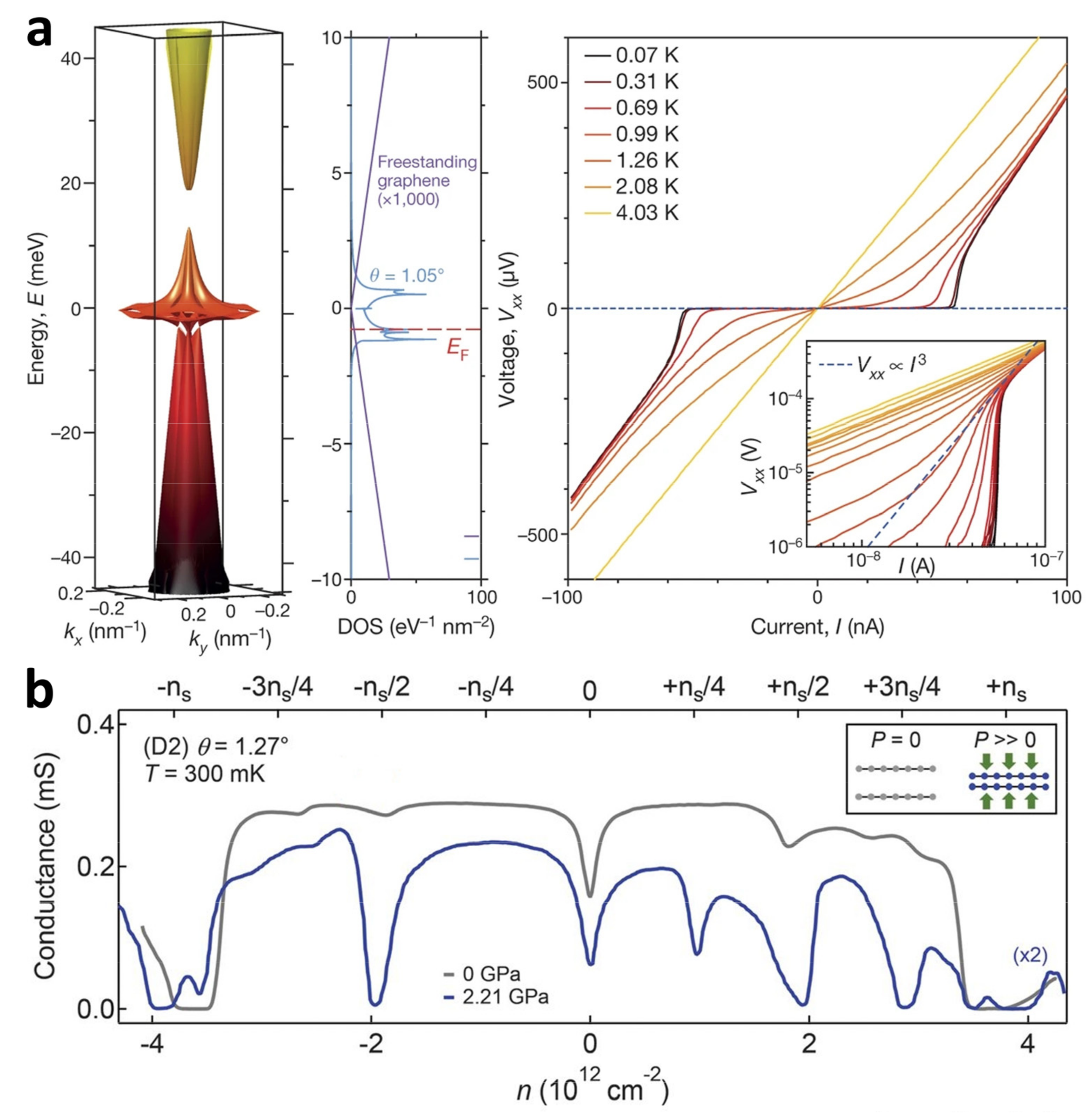

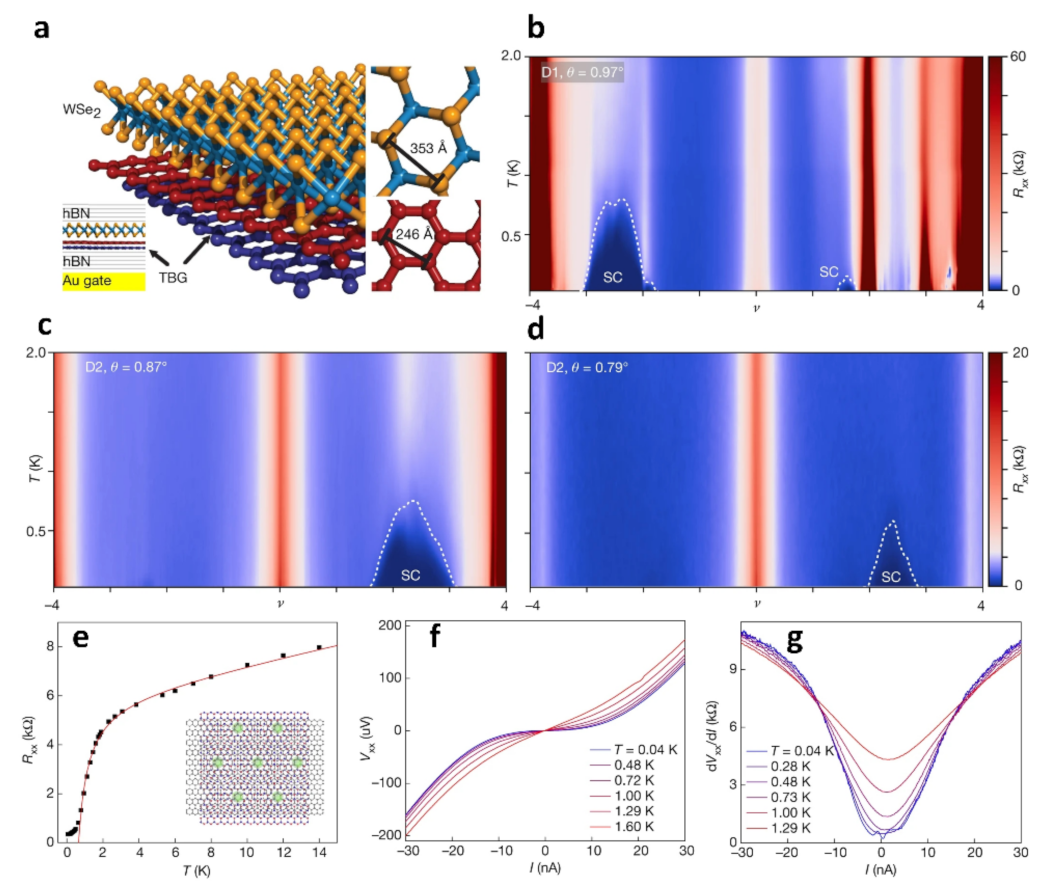
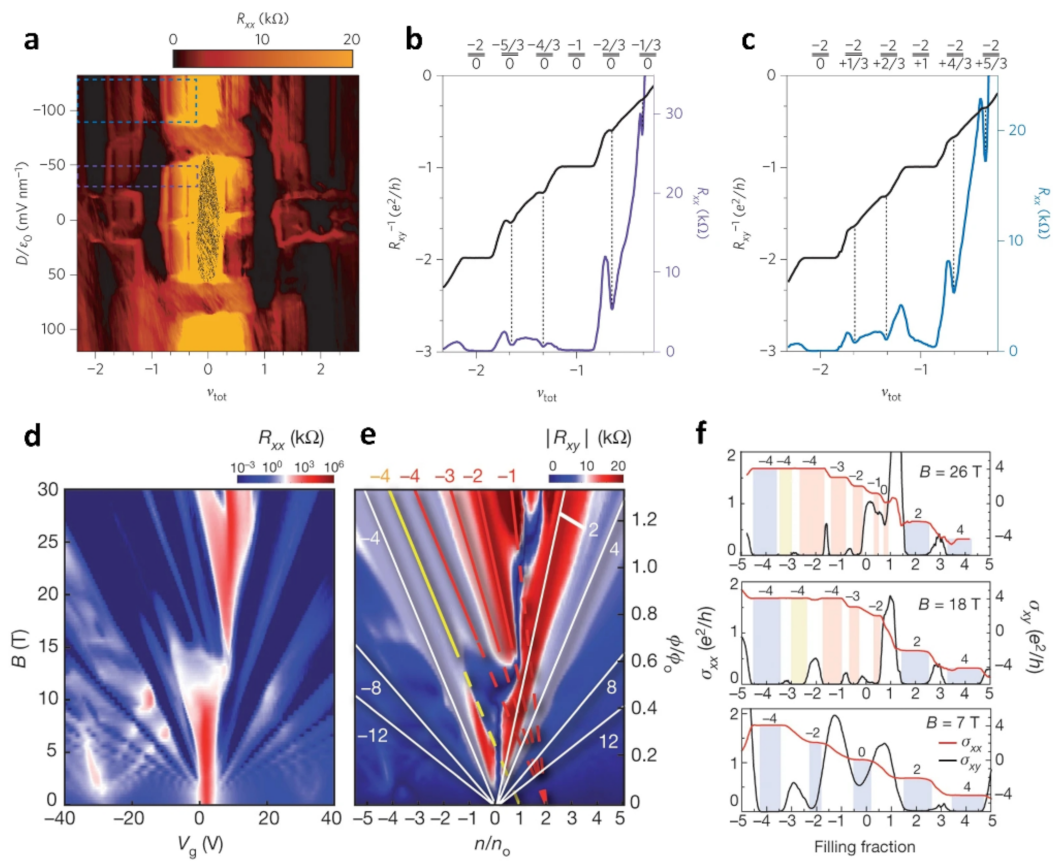
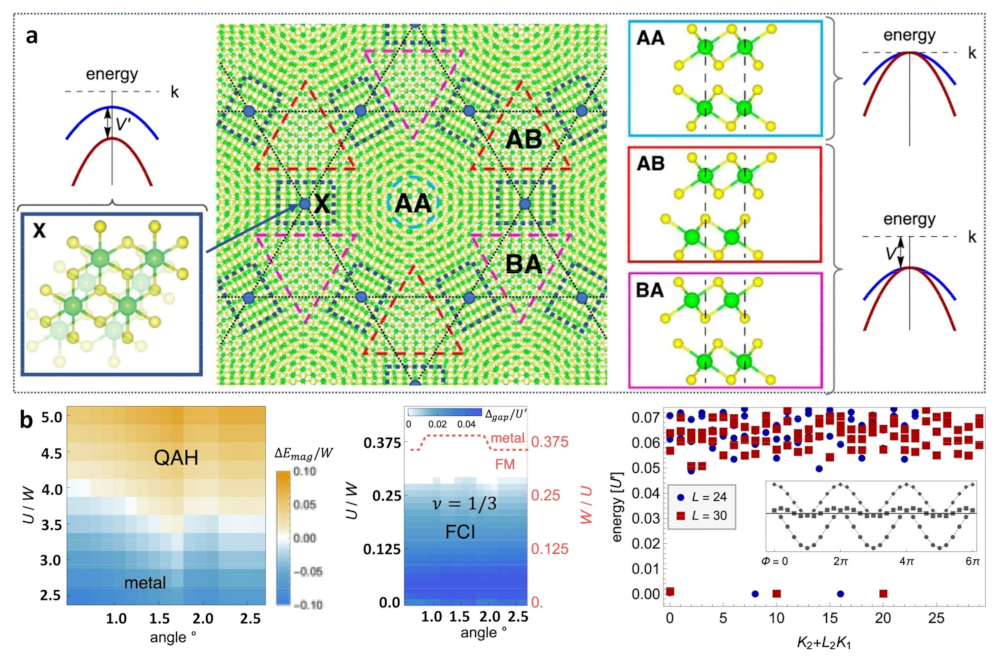
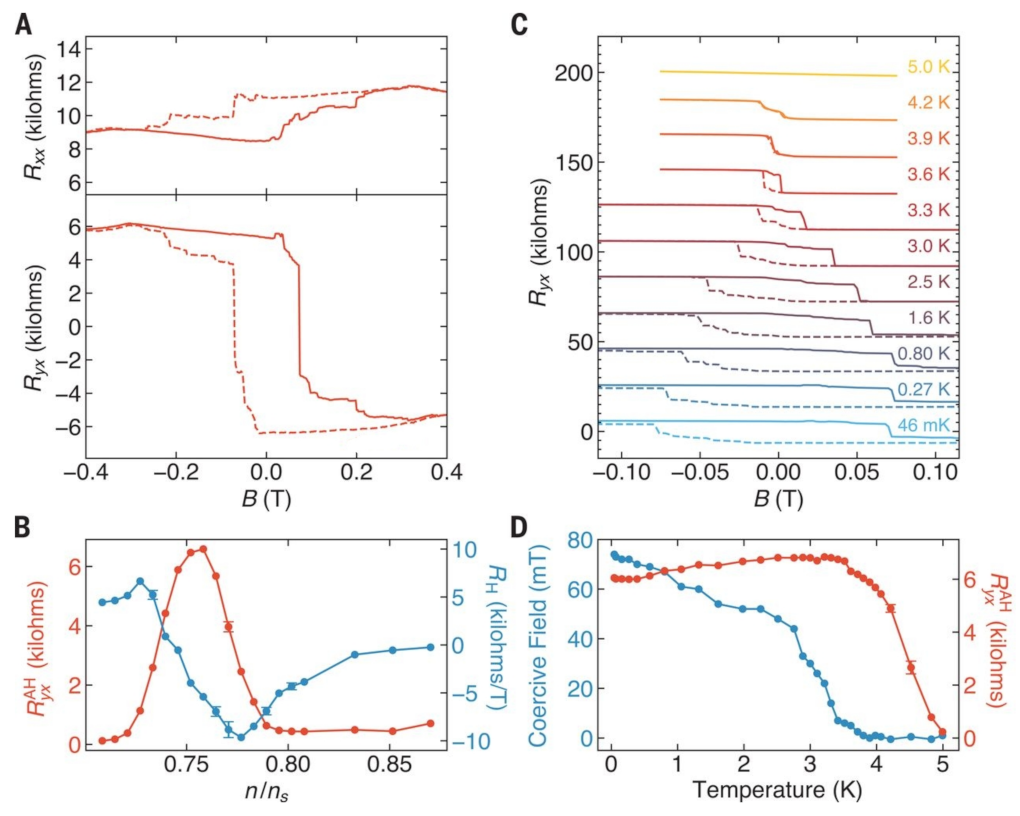
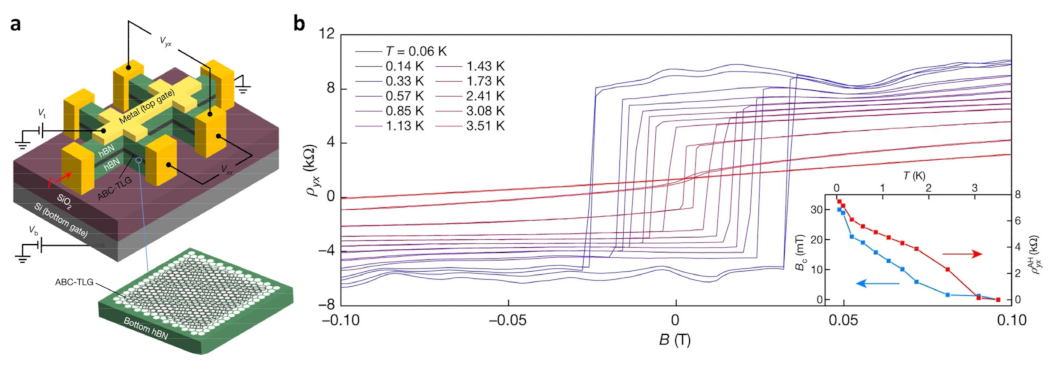
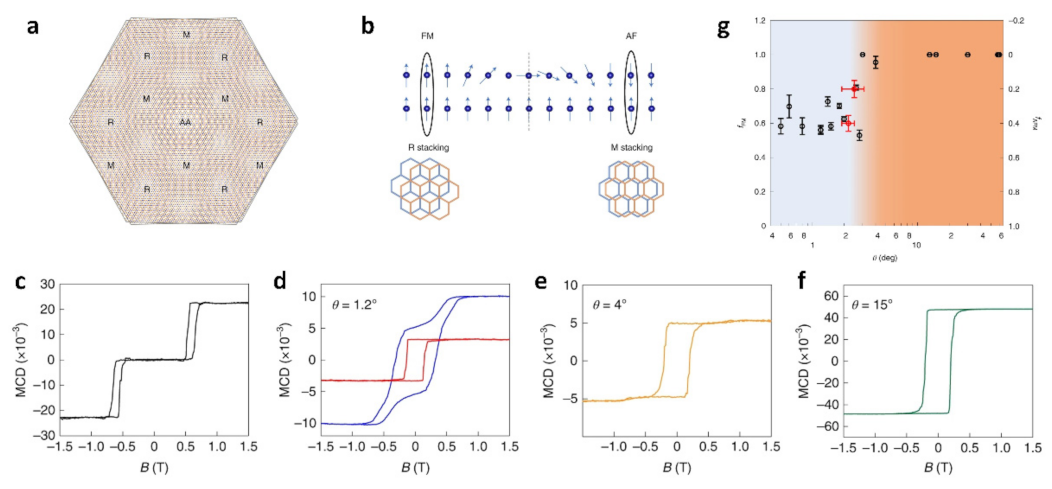
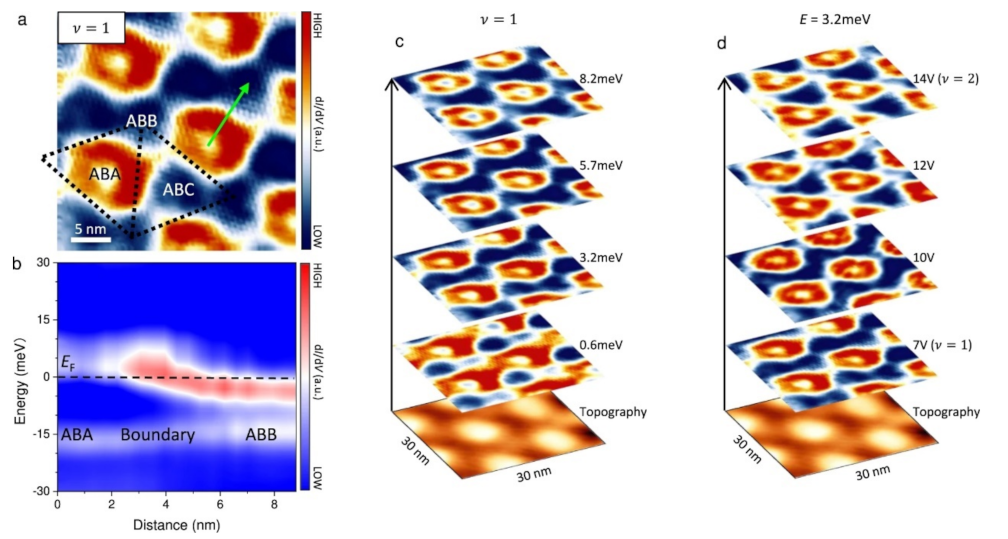
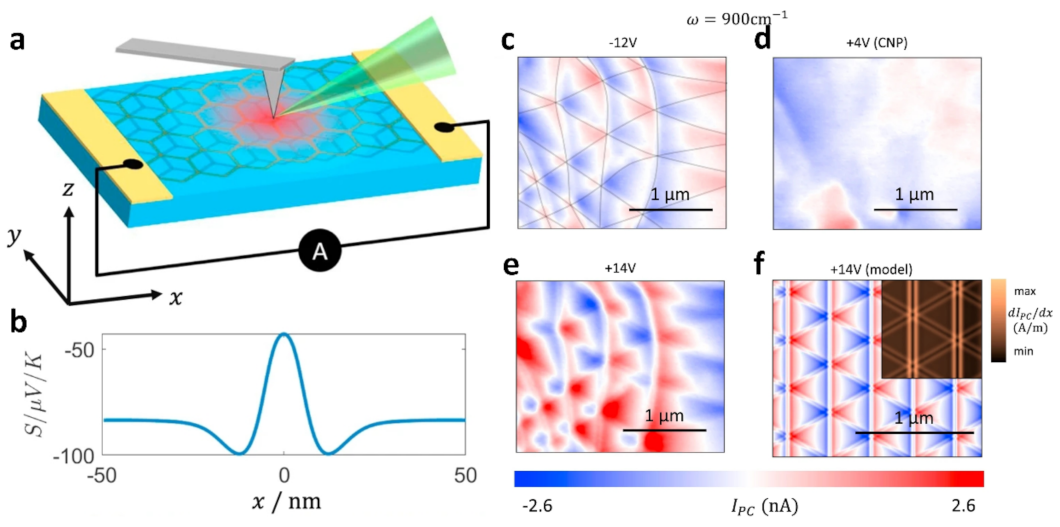


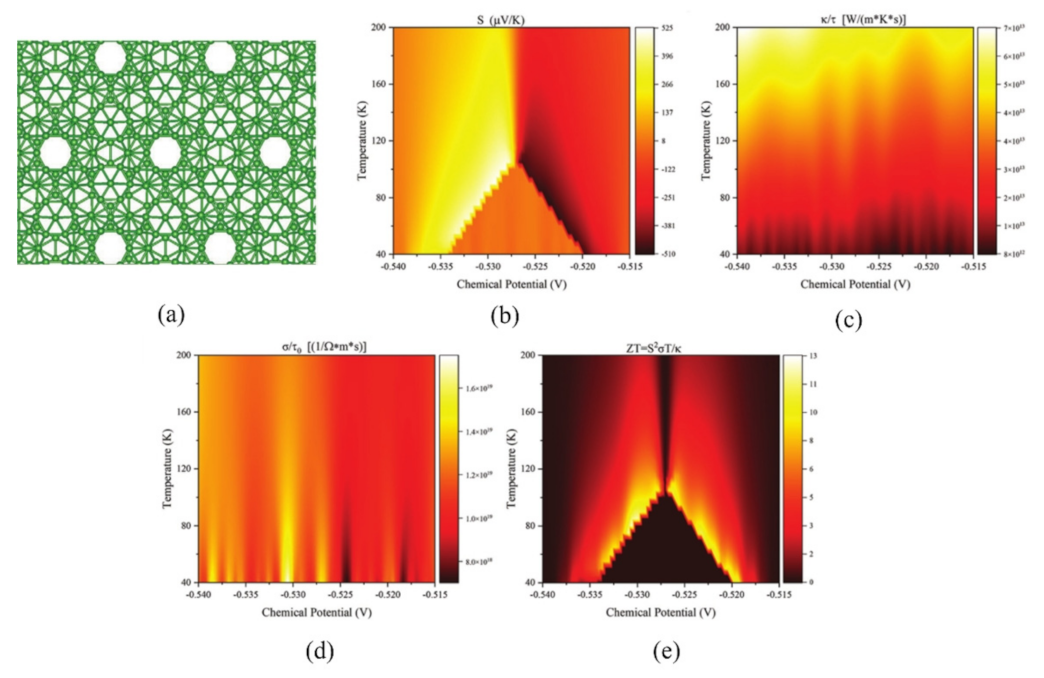
Disclaimer/Publisher’s Note: The statements, opinions and data contained in all publications are solely those of the individual author(s) and contributor(s) and not of MDPI and/or the editor(s). MDPI and/or the editor(s) disclaim responsibility for any injury to people or property resulting from any ideas, methods, instructions or products referred to in the content. |
© 2023 by the authors. Licensee MDPI, Basel, Switzerland. This article is an open access article distributed under the terms and conditions of the Creative Commons Attribution (CC BY) license (https://creativecommons.org/licenses/by/4.0/).
Share and Cite
Wang, S.; Song, J.; Sun, M.; Cao, S. Emerging Characteristics and Properties of Moiré Materials. Nanomaterials 2023, 13, 2881. https://doi.org/10.3390/nano13212881
Wang S, Song J, Sun M, Cao S. Emerging Characteristics and Properties of Moiré Materials. Nanomaterials. 2023; 13(21):2881. https://doi.org/10.3390/nano13212881
Chicago/Turabian StyleWang, Shaofeng, Jizhe Song, Mengtao Sun, and Shuo Cao. 2023. "Emerging Characteristics and Properties of Moiré Materials" Nanomaterials 13, no. 21: 2881. https://doi.org/10.3390/nano13212881
APA StyleWang, S., Song, J., Sun, M., & Cao, S. (2023). Emerging Characteristics and Properties of Moiré Materials. Nanomaterials, 13(21), 2881. https://doi.org/10.3390/nano13212881





